Fundación Bancaja presents the exhibition ‘London Calling. British Art Today. From David Hockney to Idris Khan’
The exhibition consists of fifty works, most of them unpublished in Spain, by 20 British artists born between 1937 and 1978, including artists such as David Hockney, Tony Cragg, Anish Kapoor, Damien Hirst and Idris Khan.
Bancaja Foundation has presented this morning at its headquarters in Valencia the exhibition ‘London Calling. British art today. From David Hockney to Idris Khan’, which brings together the recent work of twenty British artists from different generations for whom the city of London has played a very important role in their artistic career.
The presentation was attended by the president of the Bancaja Foundation, Rafael Alcón, and the curators of the exhibition, Maya Binkin and Javier Molins.
The exhibition, which can be visited until October 17, makes an X-ray of the most contemporary creation of a group of living artists born over five decades, between 1937 and 1978, and formed by David Hockney, Michael Craig-Martin, Phyllida Barlow, Sean Scully, Richard Deacon, Tony Cragg, Antony Gormley, Anish Kapoor, Cornelia Parker, Julian Opie, Grayson Perry, Yinka Shonibare, Jake and Dinos Chapman, Rachel Whiteread, Damien Hirst, Mat Collishaw, Rachel Howard, Jason Martin, Annie Morris and Idris Khan.
The exhibition reveals the current London art scene through a tour of fifty works, most of them unpublished in Spain and some made expressly for the show, from the artists themselves and from international galleries and collections such as Gagosian Gallery, Hauser and Wirth, Goodman Gallery, Victoria Miró Gallery, Frith Street Gallery, Cristea Roberts Gallery, Science LTD, Modern Forms, Gallerie Lelong, Gallerie Thaddaeus Ropac, Colección Hortensia Herrero and John J. Studzinski. Studzinski, in addition to works from the Bancaja Foundation collection.
The tour of the room follows the chronological order of birth of these artists, starting with the oldest, David Hockney, to the youngest, Idris Khan. The wide range of artists allows us to contemplate artistic techniques as varied as painting, sculpture, drawing, ceramics, photography, video, tapestry, installations or digital creation; disciplines in which they use a large number of materials such as cardboard, fabric, canvas, paper, cement, PVC, steel, bronze, vinyl, marble, leather, stone, aluminum, wax, plastic, silicone, silver, concrete or glass.
The selection of works reveals how the most contemporary British art approaches themes as diverse as everyday life, the confinement derived from the pandemic, the exploration of the human being, landscape, politics, religion, art history, literature, music, gender, violence, maternity, fertility, femininity, identity, commerce, race, home or the relationship between life and death. On the occasion of the exhibition, a catalogue has been published with reproductions of the works, an interview with each of the artists and texts by the curators, Maya Binkin and Javier Molins.
On the occasion of the exhibition, a catalogue has been published with the reproduction of the works that are part of the exhibition and texts by the curators.
AROUND LONDON
In 1959, the Tate Gallery hosted an exhibition entitled New American Painting, which provoked art critic Lawrence Alloway to say that “no other country in the world could mount an exhibition of postwar paintings to equal this one.” Similarly, we might now say, when speaking of the London art scene, that no other city can present an exhibition that includes the quantity and quality of the artists present in the present exhibition ‘London Calling. British Art Today. From David Hockney to Idris Khan.’
In the 1960s, the city of London began an economic and social transformation that has led it to become one of the undisputed capitals of contemporary art. An art scene made up of countless art galleries, museums or institutions such as the Tate, the Royal Academy of Arts or the Serpentine Gallery, or prestigious art schools, which gave birth to a revolution in art with movements such as the new British sculpture or the Young British Artists (YBA).
This exhibition brings together a series of contemporary artists still active today whose artistic career has been influenced in some way by London, either because they went there during their training, moved to work there to be close to the great galleries and museums, or because they left the city in search of new artistic horizons, artists who at the same time have contributed to place the city in the artistic vanguard in the manner of Florence in the Renaissance, Paris with Impressionism or New York in the second half of the twentieth century.
DAVID HOCKNEY
David Hockney (Bradford, United Kingdom, 1937) is one of the most influential British artists of the 20th century. His work ranges from photographs with collages to outdoor landscapes and portraits. Hockney attended the Royal College of Art in London with R.B. Kitaj. At the school he studied with other artists such as Francis Bacon or Peter Blake. In November 2018, his 1972 painting Pool With Two Figures sold for $90.3 million at Christie’s, making it the most expensive painting by a living artist.
Hockney’s works are currently in the collections of MoMA in New York, the Centre Georges Pompidou in Paris, the J. Paul Getty Museum in Los Angeles or the National Gallery of Victoria in Melbourne, among many others. Hockney is a Fellow of the Royal Academy of Arts in London.
Hockney’s work is characterized by the use of very diverse techniques. A good example of this are the works made with computer and iPad that can be seen in this exhibition. Many of these works made with iPad could be seen in his exhibition A Bigger Picture at the Royal Academy of Arts in London, the second most visited exhibition to date in the history of this institution.
MICHAEL CRAIG-MARTIN
Michael Craig-Martin (Dublin, 1941) trained in the United States at Yale University, but in the mid-1960s he moved to London, where he became one of the key figures in the new generation of British conceptual artists. Craig-Martin taught as a lecturer at Goldsmiths College, London from 1974 to 1988 and from 1994 to 2000. During that time, he exerted a major influence on a whole generation of students who would become what later became known as the Young British Artists.
Craig-Martin’s work has been the subject of numerous exhibitions in museums and institutions as prestigious as the Pompidou in Paris, the MOMA in New York, the Reina Sofia Museum in Madrid, the Kunstverein in Düsseldorf, the IVAM in Valencia, the Whitechapel and the Serpentine Gallery in London. He currently lives in London, which he describes as “the most dynamic, cosmopolitan and culturally diverse city in the world”. He is a Fellow of the Royal Academy of Arts in London.
This exhibition features two paintings by Craig-Martin in which we find objects of our daily life with that combination of colours so characteristic of his work. One of the works has been made during the confinement that London experienced to combat the pandemic and in it we can see those new objects that have been incorporated into our daily lives such as masks and hydroalcoholic gel.
PHYLLIDA BARLOW
Phyllida Barlow (Newcastle, 1944) is a British sculptor whose work is characterized by large sculptures made with low-cost materials such as cardboard, fabric or cement. Although she has worked all her life as an artist and as a teacher in several art schools, she has not been recognized until she was 70 years old and retired from teaching. Since then, Barlow has exhibited at the Serpentine Gallery in London (2010), represented Great Britain at the Venice Biennale (2017) and her work has been the subject of a major exhibition in 2019 at the Royal Academy of Arts. She has also exhibited at museums such as the New Museum in New York or the Kunsthaus in Zurich. She currently resides in London and is a Fellow of the Royal Academy of Arts.
This exhibition includes a large sculptural installation by Barlow that is very representative of her work. It is a piece composed of five cardboard signs covered in sand and cement that are inspired by the famous triangle-shaped signs that populate London’s urban landscape, announcing that the apartment they hang from is for sale or for rent.
SEAN SCULLY
Sean Scully (Dublin, 1945) is one of the most important international abstract artists. Scully moved to London as a child and received his artistic training at institutions such as the Central School of Art (1962-1965), Croydon College of Art (1965 – 1968), both in London, and Newcastle University where he graduated in 1972. As Scully states, in the 1960s “London was the centre of the earth. It is a city that is like a universe, that has taken so long to create and has been successful for thousands of years. There is no city in the world like it.”
Scully has exhibited in places such as New York, Philadelphia, Rome, Washington, Dublin, London, Barcelona and Valencia. He holds honorary doctorates from the Massachusetts College of Art in Boston and the National University of Ireland, among other institutions. His work belongs to the collections of such prestigious museums as The Art Institute of Chicago; the Guggenheim, the Metropolitan and the MOMA in New York; the National Gallery in Washington; the Albertina in Vienna; the Reina Sofia Museum in Madrid, the Tate in London and the Bancaja Foundation itself, among many others. He has exhibited his work at the Metropolitan in New York, the National Gallery in London and the last Venice Biennale. Scully is a Fellow of the Royal Academy of Arts.
This exhibition contains two works by Scully from the Bancaja Foundation collection. Both works belong to the Wall of Light series, made up of more than 200 works, and in them we can appreciate blocks of light that constitute walls with intense colours that keep an enormous balance. It is not clear whether the light comes from within the works or is captured by them.
RICHARD DEACON
Richard Deacon (Bangor, UK, 1949) is a contemporary Welsh artist known for his abstract sculptures in a variety of materials such as steel, wood, ceramic, vinyl, marble and leather. He studied at various art schools in London such as St. Martins School of Arts and the Royal College of Art and won the prestigious Turner Prize in 1987. The artist currently lives and works in London.
Deacon’s works are in the collections of the Stedelijk Museum in Amsterdam, the MoMA in New York, the Centre Georges Pompidou in Paris and the Tate Gallery in London, among others. The sculptures in this exhibition belong to one of his most recent lines of work, known as the Alphabet. The name comes from the fact that this group of works is composed of 26 sculptures, like the alphabet in English, but none of them represents the assigned letter.
TONY CRAGG
Tony Cragg (Liverpool, 1949) is one of the most renowned British sculptors. In 1988 he represented Great Britain at the Venice Biennale and won the Turner Prize. His work has been exhibited in museums such as the Reina Sofia, the Tate Gallery, the Stedelijk in Amsterdam, the Nasher Museum in Dallas, the Corcoran Gallery in Washington, the Belvedere Gallery in Vienna, the MACRO in Rome, the CAFA Museum in Beijing and the City of Arts and Sciences in Valencia. Cragg was elected in 1994 Academician of the Royal Academy of Arts in London and in 2016 he was made a Knight of the British Empire by the Queen.
Cragg’s work is characterized by the contrast between the industrial and nature and by the use of very varied materials such as stone, wood, aluminum, stainless steel, bronze or plastic. The sculpture in this exhibition is a good example of this, as it is made of wood but covered with industrial paint.
ANTONY GORMLEY
Antony Gormley (London, 1950) is a British artist known for his exploration of the human body and its relationship to the environment. The artist entered Trinity College, Cambridge in 1968, where he met artists Barry Flanagan and Michael-Craig Martin. He then studied at Saint Martins School of Art, Goldsmiths College and the Slade School of Art, where he graduated in 1979, beginning his career with a solo exhibition at the Whitechapel Gallery two years later. The artist currently lives and works in London. He received the Turner Prize in 1994, was elected an Academician of the Royal Academy of Arts in 2005 and a Knight of the British Empire in 2014. Gormley has exhibited in such unique venues as the Royal Academy of Arts in London, the Forte di Belvedere in Florence and Madison Square in New York.
This exhibition contains two works by Gormley in which one can see that exploration of the human body produced, in this case, with the computer through those geometric shapes represented by pixels.
ANISH KAPOOR
Anish Kapoor (Bombay, 1954) is a contemporary British artist who works with a variety of scales and materials (stainless steel, stone, wax and PVC) exploring biomorphic and geometric forms with a particular interest in the void. Kapoor was born in Bombay, but moved to London in the late 1970s, studying at both Hornsey College of Art and Chelsea School of Art. Kapoor received the Turner Prize in 1991, was elected an Academician of the Royal Academy of Arts in London in 1999 and a Knight of the British Empire in 2013. His work has been the subject of exhibitions in such iconic venues as the Turbine Room at the Tate Modern in London, the Grand Palais in Paris, the Palace of Versailles, the Royal Academy of Arts in London, the Guggenheim in Bilbao, the Forbidden City in Beijing or the Basilica of San Giorgio Maggiore in Venice. The artist currently lives in London.
In the works present in this exhibition we find two characteristics very present in Kapoor’s work: the use of the color red and stainless steel. On the one hand, we have two stainless steel discs with red lacquer in which the visitor can see himself and his surroundings reflected, becoming part of the work. And, on the other hand, we have three works belonging to the paintings made with silicone in which the colour red, so present in religious painting, is the protagonist. A series of works that remind us of what in English is called “flesh”, works that undoubtedly refer us to another of the great representatives of the London art scene of the second half of the twentieth century, Francis Bacon, whose works are characterized by representing the animal side of the human being.
CORNELIA PARKER
Cornelia Parker (Cheshire, 1956) is a British artist known for her large installations in which different parts of a work appear suspended in the air as if there had been an explosion. Parker studied at Gloucestershire College of Art and Design and then received her Master of Fine Arts from the University of Reading in 1982. She is a Fellow of the Royal Academy of Arts, a finalist for the Turner Prize and has been awarded the Order of the British Empire. Her work has been widely exhibited in museums around the world such as the Metropolitan in New York, the Serpentine Gallery in London and the ICA in Boston.
This exhibition features a variation of an iconic work by Parker entitled Thirty Pieces of Silver, which in this case is called Endless Column IV (2012) and in which we find 14 pieces of silver flattened and hung from the ceiling with cables. The installation of 30 pieces of silver refers to the payment Judas received for betraying Jesus Christ. As the artist herself explains, “silver is commemorative, the objects are milestones in people’s lives. I wanted to change their meaning, their visibility, their value, so I crushed them, abandoning them all to the same fate”.
JULIAN OPIE
The work of Julian Opie (London, 1958) is characterized by the use of thick lines in which he wraps flat colours with which he mainly depicts portraits and landscapes. Opie studied with Michael Craig-Martin at Goldsmiths College in the 1980s. His work has been exhibited in museums and institutions such as the Bancaja Foundation, the IVAM, the Hayward Gallery in London, the K21 in Dusseldorf, the Kunstverein in Cologne, the Venice Biennale and the Berardo Collection in Lisbon. His work belongs to collections such as the MOMA in New York, the Tate, the British Museum, the ICA in Boston, the Israel Museum, and the Bancaja Foundation, among others. He currently lives and works in London.
Opie plays with different ways of reinterpreting the vocabulary of everyday life. His reductionist style evokes a visual and spatial experience of the world around us. The artist connects the simplicity of the visual language of modern life with the fundamentals of art history by embracing the influence of classical portraits, Egyptian hieroglyphs and Japanese woodcuts, as well as public signs, information boards and road signs. Something we can see in the two works present in this exhibition and belonging to the collection of the Bancaja Foundation.
GRAYSON PERRY
Grayson Perry (Chelmsford, United Kingdom, 1960) is a British artist known mainly for his ceramics and tapestries in which he often includes autobiographical references in which, on occasions, his alter ego Claire appears. Perry graduated in Fine Art from Portsmouth Polytechnic University. In 2003 he was the first ceramicist to win the Turner Prize. His work belongs to collections such as the MOMA in New York and the Tate in London and has been exhibited in museums and institutions such as the Serpentine Gallery, the Andy Warhol Museum in Pittsburgh and the Kanazawa Museum of Contemporary Art in Japan. He currently lives and works in London. Perry was elected in 2011 a Fellow of the Royal Academy of Arts in London.
In his works, Perry explores notions of gender, identity and custom. In The Comfort Blanket one can see all that Perry considers English qualities, the good and the bad, while in the vase titled Modern Family he explores the changing landscape of parenthood.
YINKA SHONIBARE
Yinka Shonibare MBE (London, 1962) is a contemporary British-Nigerian artist known for his sculptural installations exploring themes of post-colonialism. Using wax-printed Dutch fabrics in his work, Shonibare produces dresses, motifs for paintings and sculptures. For the artist, the material refers to issues such as trade, race and politics, as it was produced by Europeans to be sold in Indonesia as a native style and later became popular in West African countries. A fabrics that we can see in the sculpture present in this exhibition.
Shonibare was born in London but grew up in Lagos and moved back to England during his teenage years. The artist studied at Byam Shaw College of Art in London (now called Central Saint Martins College) and then received his Master of Fine Arts from Goldsmiths College in 1991. Shonibare continues to live and work in London. His works are in the collections of the National Gallery of Art in Washington, D.C., the Victoria and Albert Museum in London and the Walker Art Center in Minneapolis, among others. Shonibare is the recent recipient of this year’s prestigious Whitechapel Gallery Art Icon Award.
JAKE AND DINOS CHAPMAN
Jake and Dinos Chapman (Cheltenham, 1966 and London, 1962, respectively) are a British artist duo whose collaborative projects incorporate images depicting grotesque scenes with continual references to art history and popular culture that often generate controversy. In that line, this exhibition contains one of his best known works, consisting of an intervention in Goya’s series of engravings The Disasters of War, and another work in which we can see a bomb vest like those used in terrorist attacks cast in bronze.
Dinos studied art at Ravensbourne College of Art and Jake at North East London Polytechnic. Both attended the Royal College of Art for their master’s degrees. The Chapman brothers belong to a group known as the Young British Artists who became known at the Freeze exhibition organized in 1988 by artist Damien Hirst.
RACHEL WHITEREAD
Rachel Whiteread (Ilford, 1963) is a British sculptor whose work is characterized by concrete replicas of objects, architecture and domestic spaces. Whiteread studied painting at Brighton Polytechnic and, later, sculpture at the Slade School of Fine Art in London. It was then that she was included in a group exhibition of the Young British Artists. Her work belongs to collections such as the Guggenheim Museum in New York, the National Gallery in Washington and the Tate Gallery in London, among others. In 2019 she was appointed by the Queen Dame Dame of the Order of the British Empire. She currently lives and works in London.
The work present in this exhibition is representative of that work related to the objects that surround her. In this sculpture he fills the space that can be found under a chair and Whiteread’s work literally fills the void of objects, creating a visual metaphor of what is lost or forgotten in society.
DAMIEN HIRST
Damien Hirst (Bristol, 1965) was the organizer of the exhibition Freeze, which was the launch of the Young British Artists movement, which rose to fame in the early 1990s. Hirst grew up in Leeds and studied at Goldsmiths College, London, where he came to the attention of collector Charles Saatchi, who became one of his first patrons. Hirst won the Turner Prize in 1995. In 2015, Hirst opened the Newport Street Gallery in London with the intention of sharing his art collection with the public. His works are in the collections of the Tate in London, the Hirshhorn Museum in Washington or the Rubell Family Collection in Miami, among others.
Hirst explores in many of his works the relationship between life and death. This can be seen in Yantra, a work of great beauty made with dead butterflies, or in Sad Memories, one of his well-known showcases that he began to create during his time at Goldsmith College and in which, with a minimalist aesthetic, he presented a showcase full of medicines. On this occasion, the medicines have been replaced by zirconia.
MAT COLLISHAW
Mat Collishaw (Nottingham, 1966) is another key figure of the Young British Artists. Collishaw creates work that confronts issues of moral ambiguity with formally impressive and engaging imagery. By marrying references to art history, literature and the Victorian era with modern technology, the artist presents powerful images and objects that often recontextualize the impact of traditionally disturbing and sinister subjects.
He has participated in exhibitions at prestigious museums and institutions such as the Pushkin Museum in Moscow, the Rudolfinum Gallery in Prague, the Botanical Garden in Madrid, Villa Borghese in Rome, the Bass Museum in Miami and the Victoria and Albert Museum in London, among others. He currently resides in London.
The works in this exhibition are an example of this moral ambiguity and references to the past. On the one hand, we have a mirror in which an image of a famous Caravaggio painting of great violence appears and disappears and, on the other hand, we can contemplate eight works belonging to the series Last Meal on Death Row, Texas (“The Last Supper on Death Row, Texas”) in which he reproduces as if it were a still life the last supper ordered by several death row inmates in a Texas prison.
RACHEL HOWARD
Rachel Howard (Easington, UK 1969) is a British painter currently living and working in Stroud. She studied at Goldsmith College, where she graduated in 1991. Howard’s work is concerned with the psychological effects of acts of extreme violence. Victims of such violence often describe an insignificant detail but cannot remember the act itself. Howard has exhibited in galleries and museums in Los Angeles, London, New York, Naples and Zurich.
In the works in this exhibition entitled Love Fool and High Flyer we can see that violence is already implicit in the choice of the color red. In them, the artist chooses a domestic object that can be found in many homes, such as a curtain made of netting, on which she paints, thus transferring this pattern to the canvas. In the painting Path to Edge, Howard manages through the glaze of the paint to create a disconcerting atmosphere, as if it were a blurred memory that we try to forget.
JASON MARTIN
Jason Martin (Jersey, England, 1970) makes work characterized by being halfway between painting and sculpture. Martin studied at Chelsea College of Art and Goldsmiths College in the early nineties. His work came to the attention of a wide audience when he was included in the 1997 exhibition Sensation: Young British Artists from the Saatchi Collection, held at the Royal Academy of Arts in London, which also included other artists such as Damien Hirst, Mat Collishaw, Jake and Dinos Chapman, Rachel Whiteread and Yinka Shonibare.
His monochrome works in which he explores the different possibilities of the surface have been seen in exhibitions in cities such as London, Venice, Malaga and Palma de Mallorca. He currently lives and works between London and Lisbon. Martin produces organic forms with a mechanical technique such as the precise movement of his brush. Brushes that are created by the artist himself and with which he achieves that recognizable style characterized by hypnotic and meditative waves of paint and color.
ANNIE MORRIS
Annie Morris (London, 1978) is a British artist who works with very different materials and techniques such as sculpture, painting, tapestries or drawings, being her best known works the sculptures of spheres of very different colours. She has collaborated with fashion brands such as Burberry and Comme des Garçons. Her work has been exhibited in galleries in London, New York, Los Angeles and Milan. Morris currently resides in London.
In this exhibition, we can contemplate one of her characteristic spherical sculptures where she explores her love for pigments. Morris has developed a technique in which the pigment appears to be slightly compressed at the top of the surface, giving a sense of fragility. The tapestry in the exhibition explores themes of femininity, motherhood and fertility with Morris’ unique iconography.
IDRIS KHAN
Idris Khan (Birmingham, 1978) works in a variety of media including photography, video and sculpture. His work is characterized by layering and subjects include literature, personal history, politics, music and religion, specifically Islam, due to his family origins. Khan completed a master’s degree at the Royal College of Art in London, where he currently resides.
His works are included in the collections of prominent institutions such as the Guggenheim Museum in New York and the Tel Aviv Museum of Art in Israel, and he has exhibited in such prestigious museums as the British Museum. This exhibition contains one of his characteristic paintings made with several superimposed crystals and one of his latest works in which music is the main source of inspiration.
The exhibition can be visited at the headquarters of the Bancaja Foundation in Valencia from June 17 to October 17.
Report by 24/7 Valencia team
‘LONDON CALLING’
June 17 -October 17 (2021)
FUNDACIÓN BANCAJA
23 Plaza Tetuán
Valencia
Tel: 96 0 64 58 40
http://www.fundacionbancaja.es
Opening hours: Tuesday to Sunday: 10 am to 2 pm and 4 pm to 8 pm // Monday: 10 am to 2 pm // Holidays: 10 am to 2 pm and 4 pm to 8 pm.
Free access for all publics: Sundays, from 4pm to 8pm.
Entrance fee: General: 3 euros / Reduced: 1 euro (pensioners, unemployed, people with functional diversity, students from 13 to 26 years old) // Free (children under 12 years old). Ticket sales at the box office (Plaza Tetuán, 23). Each ticket allows access to all the exhibitions in force at the time at the Bancaja Foundation.
Guided tour: Friday and Saturday, except holidays. 18 h. Price: 2 euros (free for children under 12). Duration: 45 min. Prior booking essential at visitasguiadas@fundacionbancaja.es. They can be taken on the day of the visit itself, ten minutes before the start.
Related Post
This site uses Akismet to reduce spam. Learn how your comment data is processed.


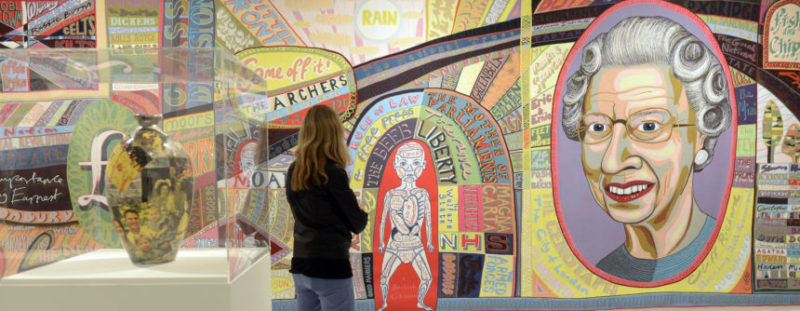
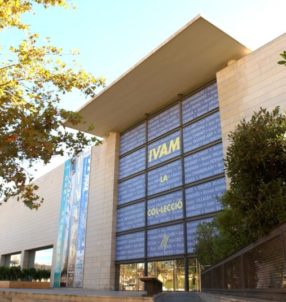
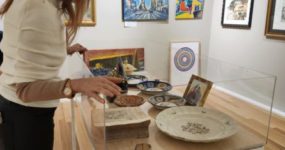
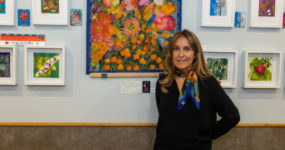

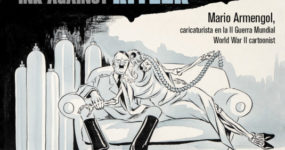

















Leave a comment